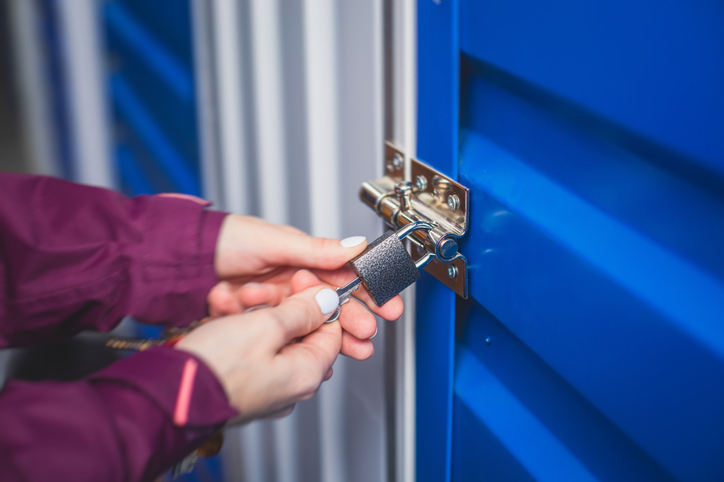LTL Freight Tracking: A Step-by-Step Guide

Ready to try ĂŰĚŇ´«Ă˝?
Carrier sign upAnyone who’s placed an online order for household goods is familiar with the standard package tracking process: You receive an email when your item ships that includes a tracking number for your delivery. Through the carrier’s website (FedEx, UPS, USPS, etc.), you can enter that number to see where your item is at every step of its journey, until it reaches your door.But what about tracking a much bigger delivery? LTL tracking is a lot more involved than following a single Amazon package. Your shipments often travel on multiple trucks, leaving you unsure of their exact locations at any given moment. Plus, weather, accidents, terminal delays, and other unforeseen circumstances can cause delays between the warehouse and the delivery’s final destination.
How to track your LTL shipment.
You need a reliable way to track LTL freight to be able to plan for and accommodate these kinds of events. Use this step-by-step guide to LTL freight tracking to ensure that your next LTL delivery is smooth sailing.
1. Select a shipping partner.
Unless you typically handle your freight bookings over the phone, it’s likely that you created an online account when you quoted or booked your LTL shipment through a freight carrier, freight broker, or digital platform. If not, make sure you’re set up in your partner’s system so you can receive an account number, PRO number, or other such identifiers to use when your shipment begins its journey.
2. Complete a bill of lading (BOL).
In LTL shipment tracking, the bill of lading (BOL) is your best defense against lost or misdelivered freight. It contains specific identifying information about your shipment, including:
- the names of the shipper and receiver
- the addresses of the origin and final destination
- the shipment’s weight and dimensions
- packaging information
- the freight’s declared value
- a detailed description of the included items
All of these details act as “pre-flight checks” for your delivery, which is why an accurate bill of lading is critical for LTL freight tracking. If any items are wrong, your goods can get lost and may be difficult to track.You should also make sure you keep the original quote summary and invoice for the shipment — as well as copies of its weight ticket — in case your BOL becomes lost or damaged.Pro tip: ĂŰĚŇ´«Ă˝'s platform creates an accurate, downloadable BOL straight from the information you input for your shipment, so you don’t have to stress about costly mistakes.
3. Use PRO number tracking.
Once your items have left your loading bay, let the LTL freight tracking begin! While some carriers may use the BOL information, such as an account number, most will provide a specific LTL tracking number called a “PRO number.” This is the easiest way for you to find information about your shipment.Using your carrier-provided PRO number, log into your carrier’s platform to see details about your freight’s whereabouts. If your carrier doesn’t offer online tracking, you may be able to email your account manager or the customer service department. If needed, you can also call your carrier directly.Lost your PRO number? Depending on your carrier and its system, you may also be able to use your:
- purchase order number
- customer reference number
- shipment reference number
Pro tip: In addition to your dedicated account manager and customer support team, ĂŰĚŇ´«Ă˝'s platform provides up-to-date LTL freight tracking information to get you the tracking information you need ASAP.
Eliminate LTL tracking inefficiencies.
One of the main reasons that LTL freight tracking is so important is that delivery delays are inherently more likely with less-than-truckload shipping. Because carriers constantly shift your items from truck to truck with frequent offloads and waiting periods at terminals, you’re at a higher risk of not only slowdowns and missed deliveries but damage as well.In 2022, 86% of LTL shippers replaced/reshipped damaged freight, with an average of $1,988 paid for each damaged and late shipment. To prevent LTL’s high likelihood of damage and delays, shippers may opt to pay more to move their freight safer and faster via truckload (TL) – despite not filling the entire trailer. In 2022, 45% of shippers reported shipping partially empty truckloads, with an average of 25 linear feet of unused deck space. This is the equivalent of 1 in 5 truckloads being moved completely empty!So one way to avoid LTL’s added fees is forking over more money for TL shipping. But what if you could get TL level service without the steep price tag? Enter: ąó±ô´Çł¦°ě¶Ůľ±°ů±đł¦łŮ®, our one-of-a-kind shared truckload mode.
Gain better tracking visibility with ąó±ô´Çł¦°ě¶Ůľ±°ů±đł¦łŮ®.
ĂŰĚŇ´«Ă˝ is the only logistics provider offering guaranteed terminal-free shipping for your midsize freight by booking via our ąó±ô´Çł¦°ě¶Ůľ±°ů±đł¦łŮ® service. When you book ąó±ô´Çł¦°ě¶Ůľ±°ů±đł¦łŮ®, our tech matches locations, schedules, and compatible shipments — finding the best options to pool freight at scale among billions of possible combinations to move your shipment as a shared truckload. The ultimate benefit? ąó±ô´Çł¦°ě¶Ůľ±°ů±đł¦łŮ® shipments have a higher on-time delivery rate than LTL. Unlike traditional LTL shipping, you can track your ąó±ô´Çł¦°ě¶Ůľ±°ů±đł¦łŮ® shipment at any time on our platform. That’s a huge improvement over standard LTL freight tracking. With ĂŰĚŇ´«Ă˝â€™s enhanced tracking, you’ll know your shipments whereabouts and be better prepared to manage delays should bad weather or other unpreventable circumstances arise.Ready to see how ąó±ô´Çł¦°ě¶Ůľ±°ů±đł¦łŮ® can reduce inefficiencies in your business? Request a demo today.


.jpg)
